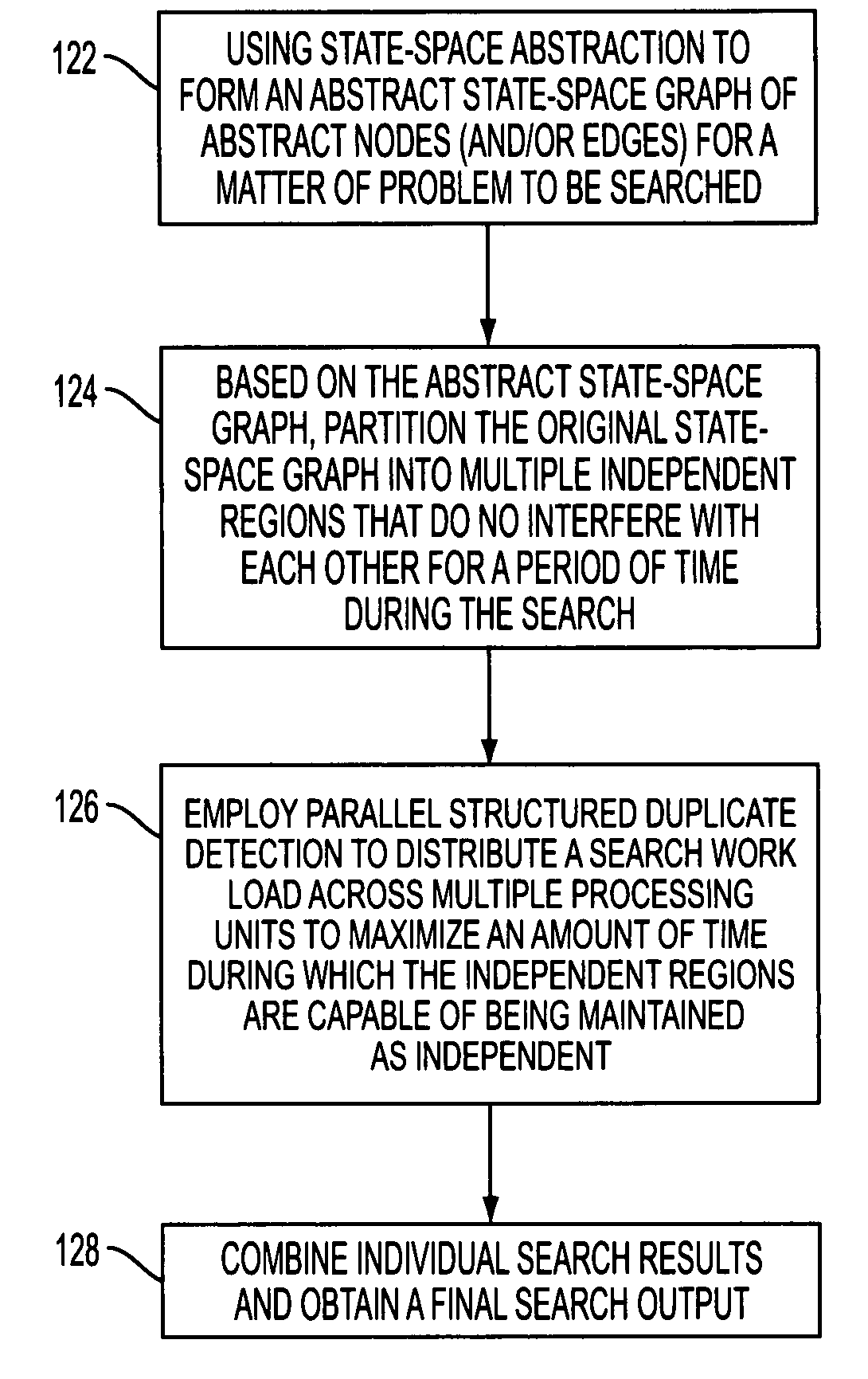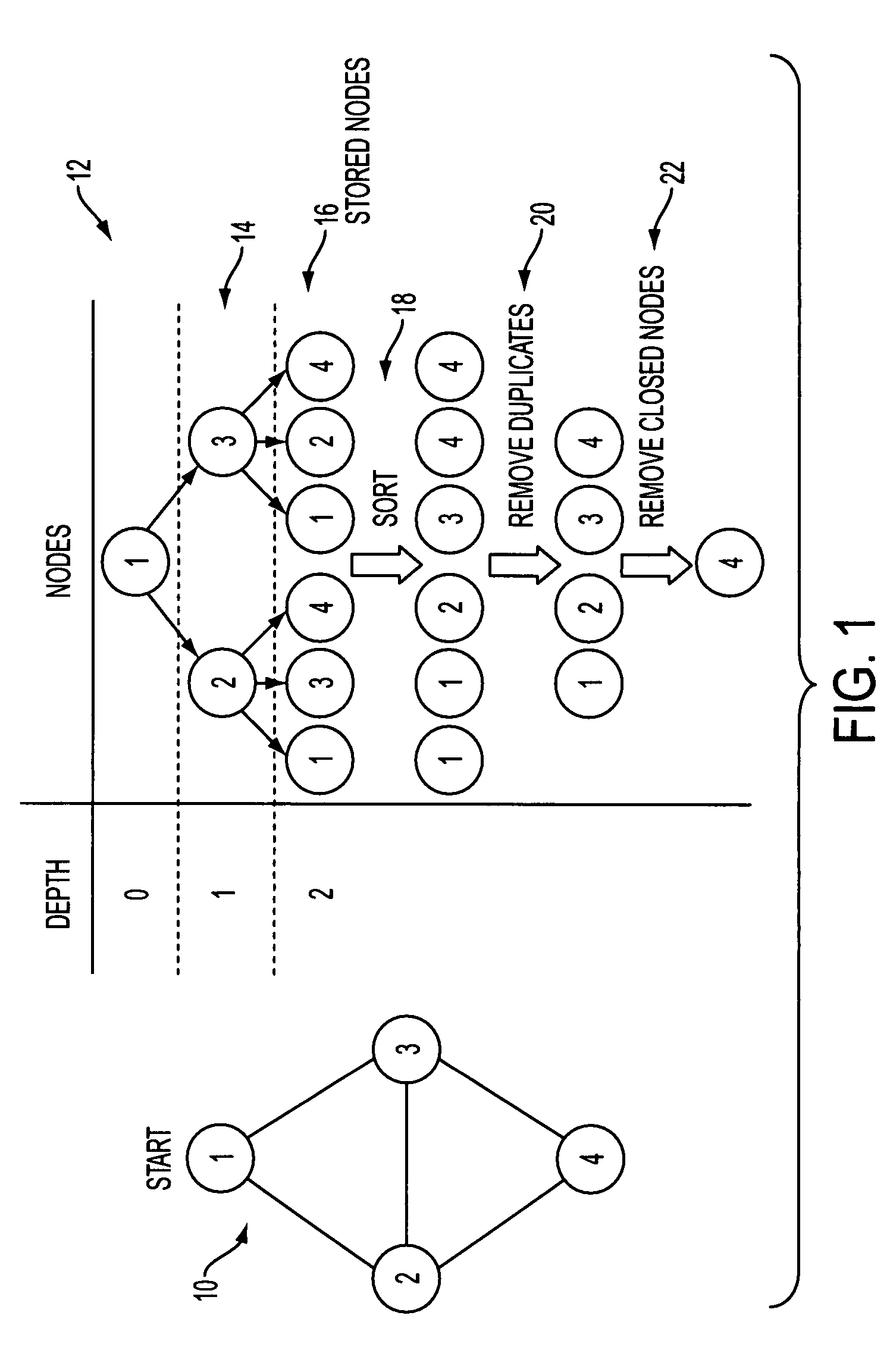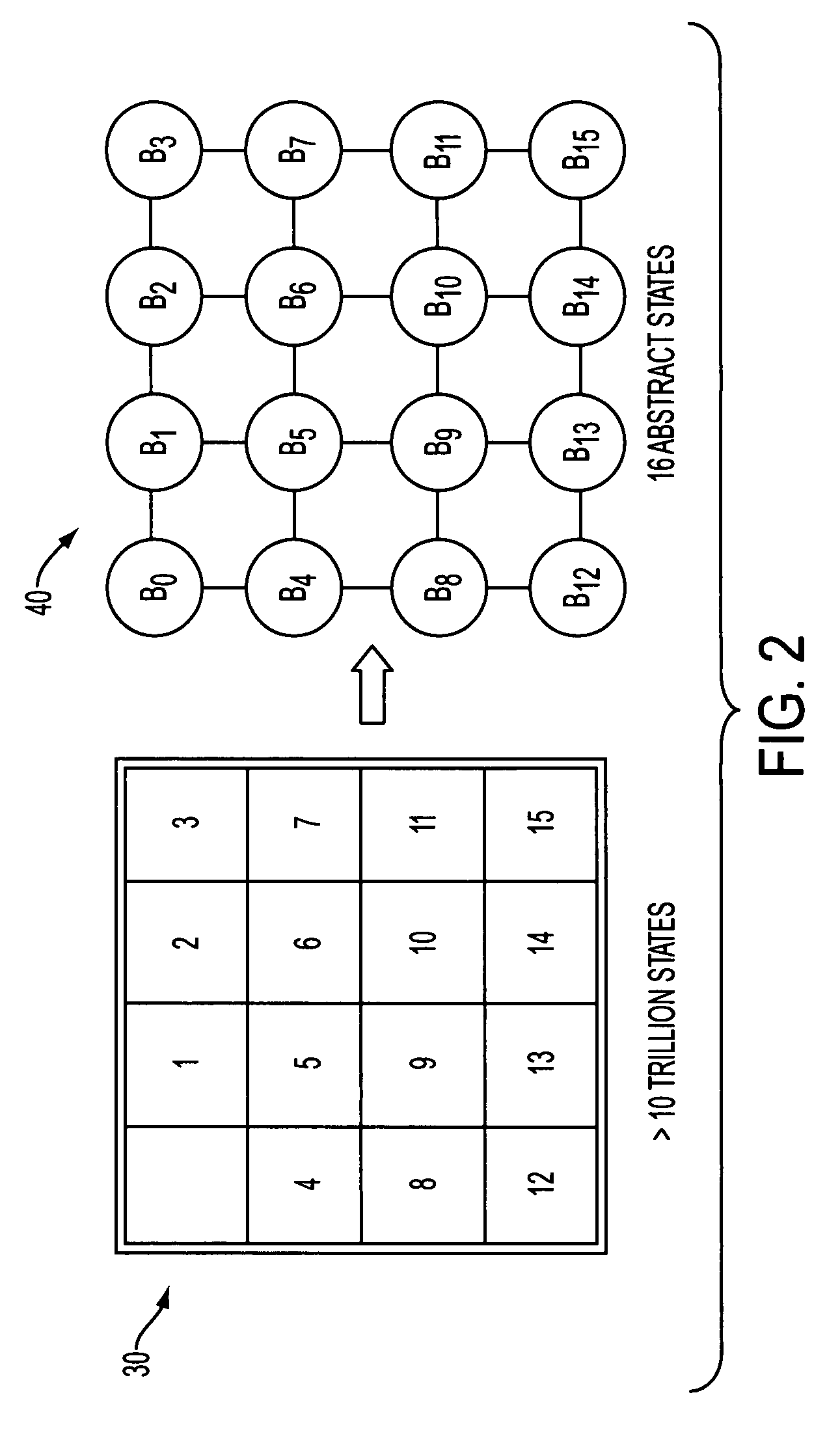System and method for parallel graph search utilizing parallel structured duplicate detection
a graph search and structured duplicate technology, applied in the field of graph search, can solve the problems of increasing the cost of communication and/or synchronization, incurring prohibitive communication overhead, and unable to solve the problem of many search problems, etc., and achieve the effect of maximizing the amount of tim
- Summary
- Abstract
- Description
- Claims
- Application Information
AI Technical Summary
Benefits of technology
Problems solved by technology
Method used
Image
Examples
Embodiment Construction
[0045]The following discussion describes a generalization of structured duplicate detection (SDD), called parallel structured duplicate detection (PSDD), that reduces communication overhead in parallel graph search, using techniques that do not subsequently increase search overhead, resulting in efficient parallelization.
[0046]Because a graph search is typically memory bound, parallelizing the search, by itself, will not usually improve scalability. Therefore, this application also describes several techniques for integrating the present approach to parallel graph search with the approach to external-memory graph searches based on structured duplicate detection (SDD). The effectiveness of these techniques are described herein, in a graph-search algorithm for domain-independent STRIPS planning.
[0047]Thus, set out in the following is a novel approach to parallelizing graph search, using structured duplicate detection. As mentioned, structured duplicate detection was originally develop...
PUM
 Login to View More
Login to View More Abstract
Description
Claims
Application Information
 Login to View More
Login to View More - R&D
- Intellectual Property
- Life Sciences
- Materials
- Tech Scout
- Unparalleled Data Quality
- Higher Quality Content
- 60% Fewer Hallucinations
Browse by: Latest US Patents, China's latest patents, Technical Efficacy Thesaurus, Application Domain, Technology Topic, Popular Technical Reports.
© 2025 PatSnap. All rights reserved.Legal|Privacy policy|Modern Slavery Act Transparency Statement|Sitemap|About US| Contact US: help@patsnap.com



